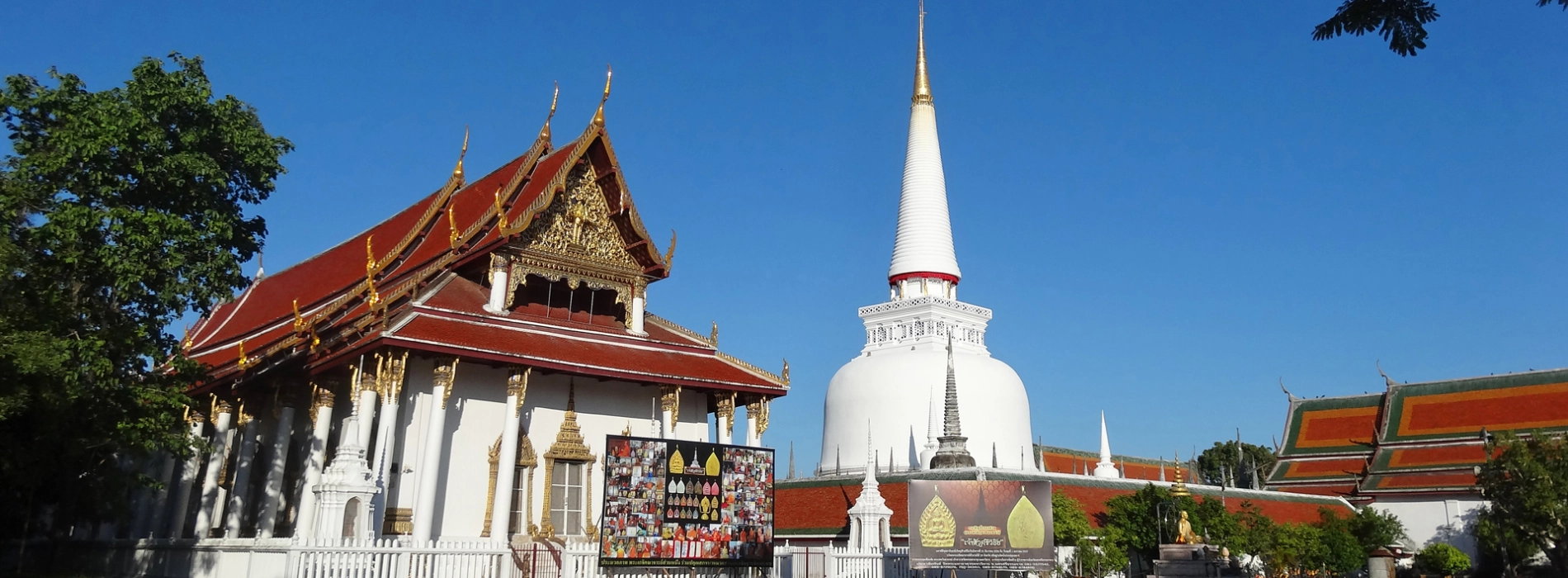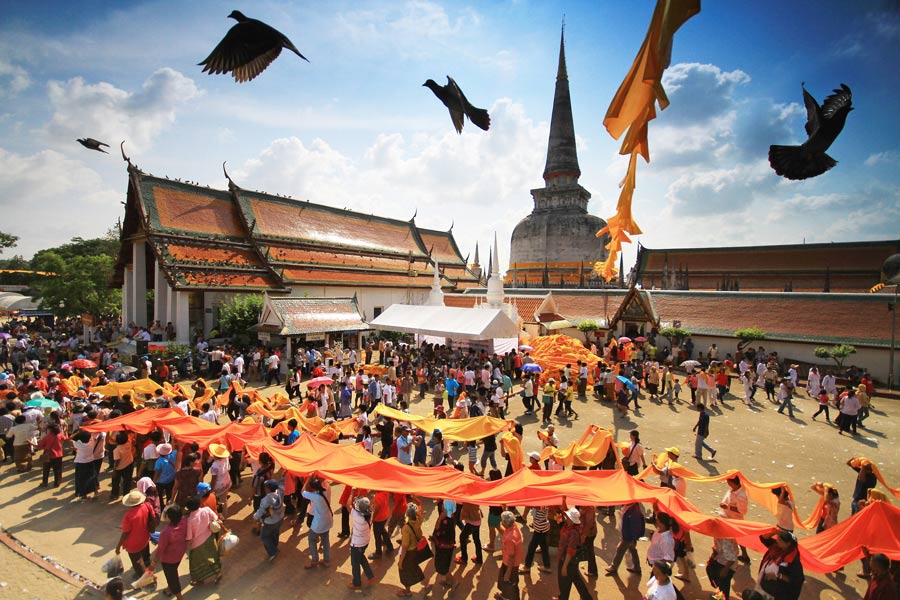Wat Phra Mahathat Woramahawihan

Wat Phra Mahathat Woramahawihan, in Nakhon Si Thammarat Province, Thailand, is a historically significant Buddhist temple from the 8th century Srivijaya era. Renowned for its central chedi believed to house Buddha relics, the temple features a blend of Thai and Sri Lankan architectural styles. As one of southern Thailand's oldest and most revered temples, it attracts both pilgrims and tourists, highlighting its cultural and historical importance.
Let’s explore this temple with Asia King Travel!
The primary Buddhist pilgrimage place in Southern Thailand is Wat Phra Mahathat Woramahawihan. The Pali language is the source of the given name. "Great Noble Temple of the Great Noble Relics Stupa" is the direct translation of Vara Maha Dhatu Bara Maha Vihara in Pali. This Buddhist temple is also known as Phra Borommathat Chedi.
.jpg)
About Wat Phra Mahathat Woramahawihan
Early in the thirteenth century CE, King Dhammasokaraja constructed the temple. Its building was primarily done to provide a symbol for the province's Theravada Buddhist religion. It is thought that a tooth relic belonging to Gautama Buddha is kept at the shrine.
It is said that Queen Hem Chala and Prince Thanakuman obtained the Buddha relic. The relic was positioned within the little pagoda they had constructed at Hat Sai Kaew in 291 CE. On this same location, king Si-Thamma Sokarat erected a new temple when he founded the city. The Mahayana style was used in the temple's construction. Wat Phra Borom That is the name he gave the temple.

History of Wat Phra Mahathat Woramahawihan
It has been generally acknowledged that later in the city's history, war and illnesses nearly drove its residents out. Dhamma Sokaraja, the king, was inspired to reconstruct the city. As a result, he built the city and a bigger stupa in the Sri Lankan style with the assistance of the general populace.
On the exact location of the temple Wat Phra Borom That, the stupa was constructed. Theravada Buddhism was also established in part by this stupa. Other religious structures were also built in addition to the stupa. One such structure is Wihan-Bodhi Lanka, a covered cloister encircling the Bodhi tree.
The facility is situated on approximately 5.14 hectares of rectangular land. Like other temples, the complex of this one is split into two halves. The first is designated as a Buddha-avasa, or place for religious activity, while the second is designated as a Sangha-avasa, or monastic residence.
The main stupa's exterior has an umbrella-like spire and a bell-shaped addition. The tower and the bell-shaped dome are separated by a row of relief-cast walking Buddha figures. The 10.89-meter-tall spire is coated in gold leaf, which weighs over 600 kilograms. The stupa is positioned atop a low brick wall, creating a path for devotees to walk around in a clockwise manner.
.jpg)
The main Stupa of Wat Phra Mahathat Woramahawihan
In addition to the main stupa, which is situated above the foot of a short brick wall, the main stupa is surrounded by four additional tiny, bell-shaped stupas that face in different directions. The base of the stupa is surrounded by 22 standing elephant sculptures.
Numerous stupas or chedis round the main stupa, followed by the gallery that holds Buddha statues. The old Buddha statue is a 13th–14th century CE Sukhothai Buddha statue. The big stupa is surrounded by 158 smaller stupa in total. The devotees construct these little stupas in remembrance of their departed forebears. Thus, the bones and ashes of the dead are kept in these stupas.
.jpg)
Feature of Wat Phra Mahathat Woramahawihan
Wat Phra Mahathat Woramahawihan in Nakhon Si Thammarat, Thailand, is a destination that varies in price depending on a number of circumstances, including your starting point and means of transportation.
Temple Entrance: Although admission to Wat Phra Mahathat Woramahawihan is normally free, contributions are welcomed.
Traveling to the Temple:
November through February is the ideal time of year to visit Wat Phra Mahathat Woramahawihan. Temperatures range from 24°C to 32°C with low humidity throughout these colder, drier months, making it pleasant for exploration. As this time of year is during the dry season, there will be bright sky and little rain.

Best time to visit Wat Phra Mahathat Woramahawihan
Furthermore, February has Makha Bucha Day, a major Buddhist event that provides a distinctive cultural experience. During these months, it is possible to have a more relaxing and pleasurable experience by going early in the morning.
The most convenient way is to fly to Nakhon Si Thammarat Airport and take a taxi to the temple. Alternatively, you can travel by train or bus from Bangkok, followed by a short taxi or tuk-tuk ride to the temple. Driving is also an option if you prefer a road trip.
Read more: South Thailand tours